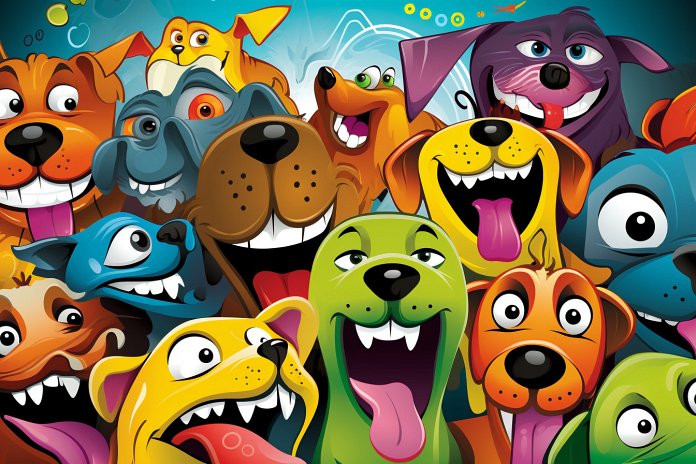
Dogs are incredibly intelligent creatures, surpassing even apes in certain abilities. They have heightened senses, quick learning abilities, memory, complex emotions, and more. Have you ever wondered if dogs can differentiate between happy and angry faces? As a dog owner, you may have noticed that your dog reacts differently to your facial expressions and emotions. Science has now confirmed that dogs can indeed distinguish between happy and angry facial expressions.
Signs of a Dog Reacting to Facial Expressions
You know your dog well and can recognize their emotions. Similarly, your dog can read your signals and react to your facial expressions. If you have an angry expression, your dog may cower, lower their ears, tilt their head, or tuck their tail. These signs indicate that your dog knows something is wrong and that you are angry. On the other hand, if your dog sees a happy expression, they may wag their tail, raise their ears, jump up, or lick your face. These signs may vary depending on your dog’s personality.
Body Language
Here are some signs that indicate whether your dog recognizes if you’re happy or angry:
– Alert
– Cowering
– Jumping up
– Wagging tail
– Raised ears
– Dropped ears
– Tail tucking
– Licking
Other Signs
These are additional signs that your dog may display if they recognize whether you’re happy or angry:
– Acting submissive
– Getting excited
– Maintaining eye contact
History of Dogs Reading Human Facial Expressions
While research on dogs’ ability to differentiate between facial expressions is increasing, little is known about why dogs can distinguish between happy and angry faces. Scientists believe it may be due to their past experiences or as a result of the domestication process. Dogs spend their entire lives with humans, giving them ample opportunity to learn and understand their owners’ facial cues. Dogs and humans have developed a close bond over the years, and dogs may have been bred to possess the ability to read humans. Future studies will explore the extent to which a dog’s ability to recognize human expressions is related to domestication and time spent with humans.
Science Behind Dogs Telling the Difference Between Happy and Angry Faces
A study conducted in Vienna with various dog breeds confirmed that dogs can differentiate between happy and angry faces. The study involved training dogs to recognize these expressions using sets of pictures. Dogs were rewarded for correctly selecting the happy face, which resulted in faster learning compared to rewarding the selection of the angry face. The research also found that dogs could choose the correct face 70-80% of the time, indicating their ability to transfer their trained skills to different cues.
Training Dogs to Recognize Happy and Angry Faces
In most cases, you won’t need to train your dog to recognize your facial expressions as they already understand you well. However, if you wish to train them, you can follow the methods used in the Vienna study. Simplify the training process by showing them complete pictures of happy and angry faces. Reward your dog with treats when they correctly select the happy or angry face and associate verbal commands, such as “happy face,” with the respective expressions. Consistently rewarding and using verbal cues will help them understand the difference between happy and angry faces.
“Dogs have an innate ability to read human facial expressions and can distinguish between happy and angry faces, a skill that is a result of their close bond with humans and their domestication process.”

Tips & Things to Know
1️⃣ Dogs have the ability to distinguish between happy and angry facial expressions. They can read your signals and react accordingly, whether it’s cowering or wagging their tail with joy.
2️⃣ Dogs can recognize if you’re happy or angry through body language, such as raised ears, dropped ears, or maintaining eye contact. These signs may vary depending on the dog’s individual personality.
3️⃣ While the exact reason behind dogs’ ability to recognize human facial expressions is still unclear, it is believed to be a result of their close bond with humans throughout the domestication process. Future studies aim to determine the extent to which this ability is learned or innate.
Frequently Asked Questions, Answered ✅
1. Can dogs tell the difference between happy and angry facial expressions?
– Yes, science has confirmed that dogs can indeed tell the difference between happy and angry facial expressions.
2. How do dogs react to angry facial expressions?
– Dogs may cower, lower their ears, drop their tail, or tilt their head to one side in response to an angry expression.
3. How do dogs react to happy facial expressions?
– Dogs may wag their tail, raise their ears, jump up, lick your face, or bark from excitement in response to a happy expression.
4. Why can dogs recognize human facial expressions?
– It is believed that dogs’ ability to recognize human facial expressions is either learned through past experiences or a result of the close bond formed during the domestication process.
5. Can dogs be trained to recognize happy and angry faces?
– Yes, dogs can be trained to recognize happy and angry faces by using pictures and rewarding them with treats when they correctly select the corresponding expression.